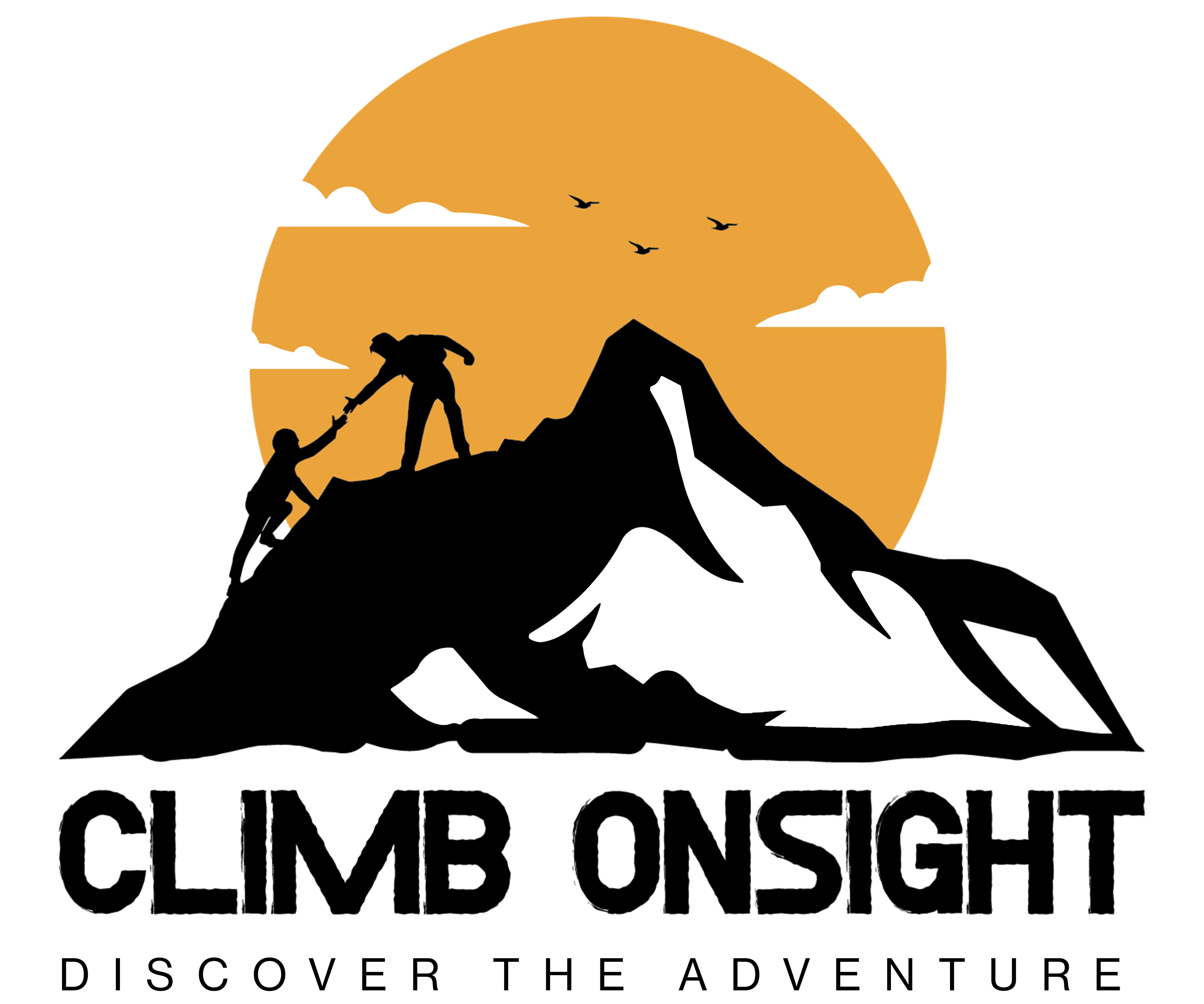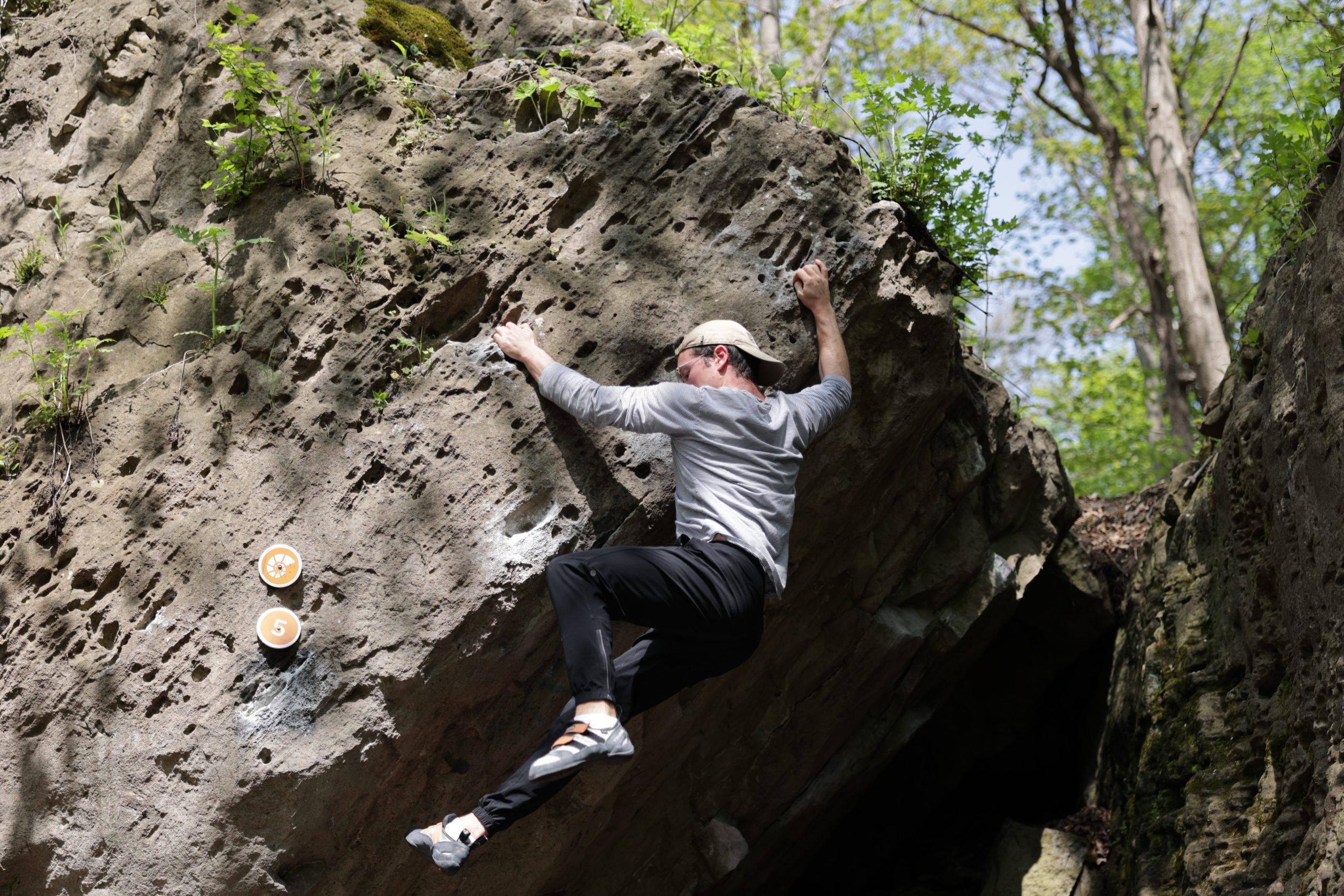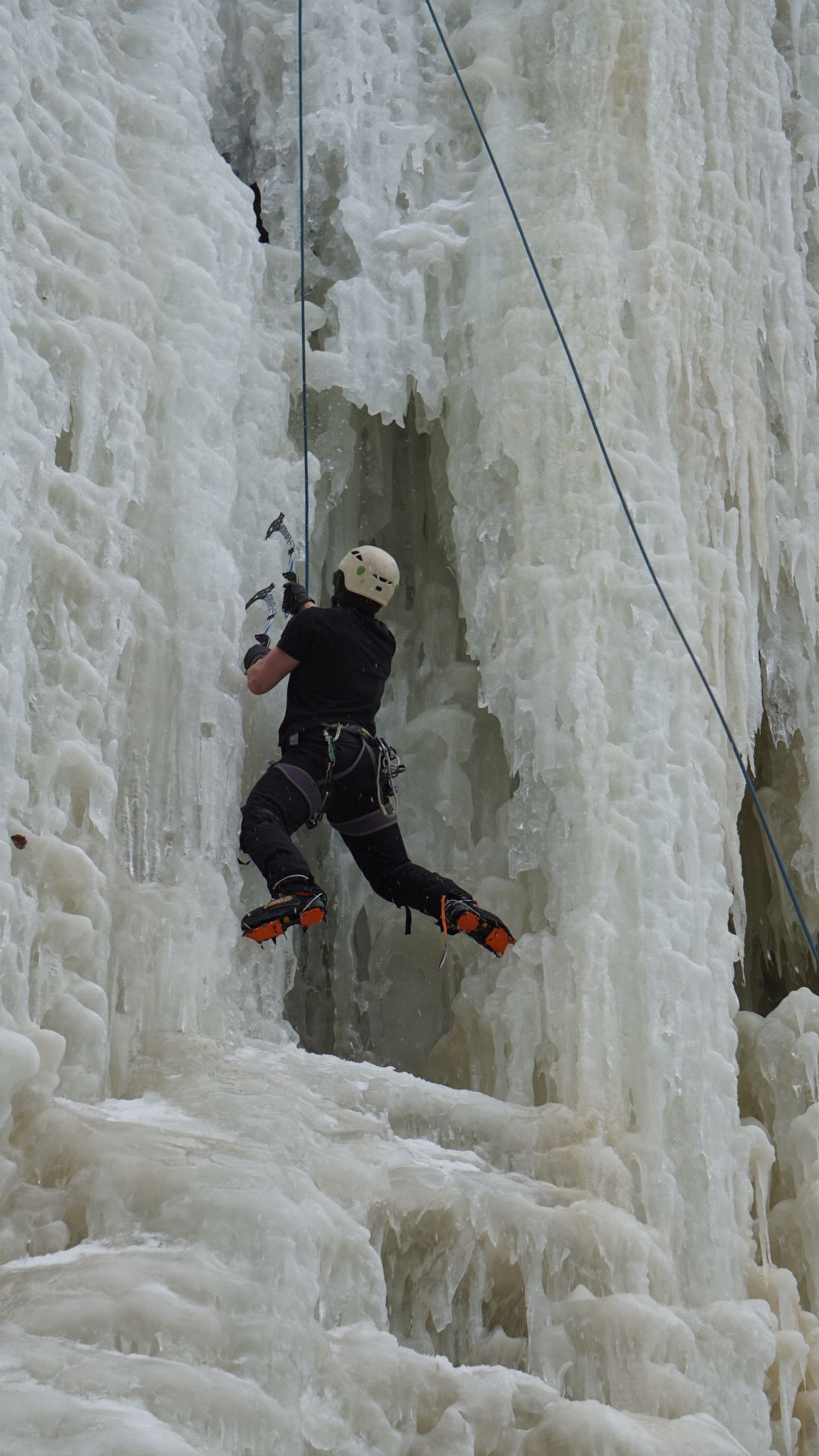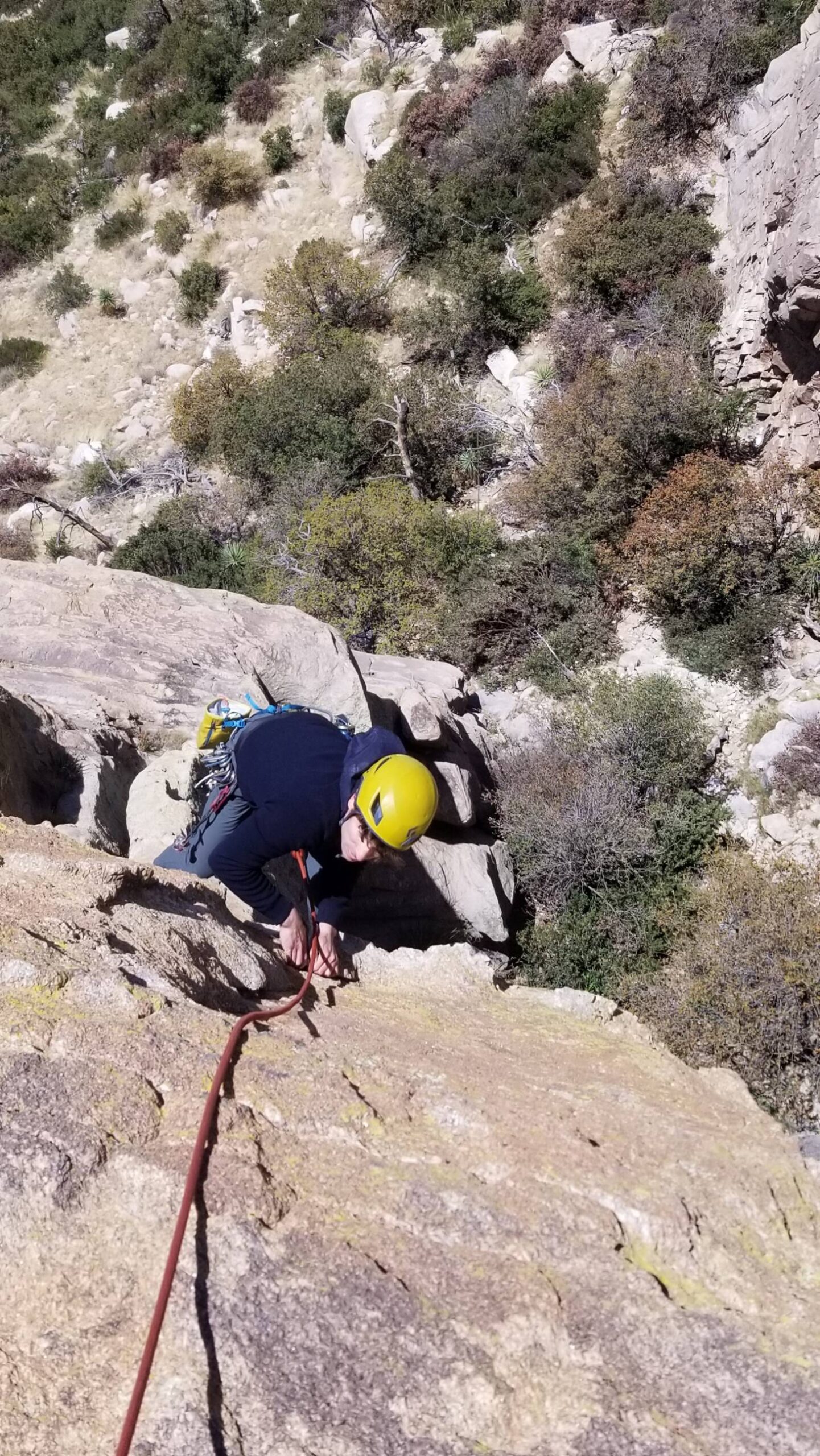Disclaimer: I am not a physicist. We had the option in high school to take either physics, biology, or chemistry. I chose biology. Oh well. The advice in this blog series is based on research. If I have made a mistake or if you like the content, please send me any feedback to srosenthal@climbonsight.ca.
Elizabeth Zott, the main character in the book, “Lessons in Chemistry” by Bonnie Garmus, hosts a cooking show where she explains the science behind cooking.
Ms. Zott begins: “Today, we’re going to study three different types of chemical bonds: ionic, covalent, and hydrogen. Why learn about bonds? Because when you do you will grasp the very foundation of life. Plus, your cakes will rise.”
If cooking is chemistry, climbing is physics. So, today let’s study physics to understand the foundations of movement. Plus, you will climb higher.
This is the first of a series of blog posts on climbing physics. There are many physics concepts in climbing, including: gravity, friction, angular momentum, torsion, etc. Initially, I tried explaining all these concepts in one post, but that is outside my pay grade.
To begin, let’s tackle the universal constant of climbing: falling.
Gravity
One of my favorite expressions is from Rocky, “Time, you know, takes everybody out. It’s undefeated.” In climbing, another variable in Albert Einstein’s general relativity equation is undefeated:1General relativity is way outside the scope of this blog post, but it is fascinating. One such insight is “gravitational time dilation” where time moves slower closer to a gravitational field. In other words, a sea-level clock ticks more slowly than a clock in the Alps.
A short but mind-blowing book on time is “The Order of Time” by Carlo Rovelli. My friend and I listened to Benedict Cumberbatch read it to us on a road trip, pausing every few minutes to marvel at the mysteries of the universe and to ask, “Did you understand that?” (the concepts, not the English accent). gravity.
No climber has ever successfully defeated gravity on every attempt. So, who, or more, what, is gravity?
Gravity is the universal force of attraction acting between all objects with mass.2What is Gravity, NASA (Dec. 17, 2020). Bigger masses have more gravity and the closer the objects are to each other, the stronger the gravitational pull.3Id.
In climbing, there are two objects with mass: the earth and the climber.4I’m ignoring other objects, like a rope. To point out the obvious, Earth has way more mass than a climber, so Earth’s gravitational pull beats our own. In other words, climbers are fighting the weight of the world.5On average, climbers face a gravitational force of 9.8m/s2. That is the average gravitational force, but the gravitational pull differs around the world. Indeed, using satellites, NASA has mapped Earth’s gravity, which are explained in this Washington Post article.
I wanted to make a qualification on the above articles. NASA mapped Earth’s gravity using satellites in orbit. For objects on the ground, i.e., climbers, there is a different gravitational force. For instance, NASA found that the Himalayas have a strong gravitational force, but a person standing on the top of the Himalayas experiences a weaker gravitational pull. I’ll briefly explain the difference, but for a more informed understanding you can review the following sources: here, here, and here.
In brief, as mentioned, distance affects the gravitational field. Satellites orbiting Earth have the same distance to the Earth’s core regardless of whether they are above a mountain or the sea. But when the satellite hovers over a mountain, they are closer to a body of mass. So, for an object orbiting the Earth, the distance is constant but the mass changes.
In contrast, a person standing at sea level or on top of the Himalayas has two different distances from the Earth’s core. The mass may also change. There may be more mass under their feet in the Himalayas than in the Ocean. So, for a person standing on Earth, the distance and mass change. The gravitational force is affected by both of these variables. In mountains, generally, the increase in the distance has a bigger effect than the increase in mass, so there is a weaker gravitational force.
Climbing Against Gravity
Climbers need to be aware of their center of gravity – the hypothetical area where the force of gravity appears to act. Think of a ball balancing on a table edge. The ball will remain perched as long as approximately fifty percent of the ball is above the table. Anymore, and it will roll off. This is due to the ball’s center of gravity.
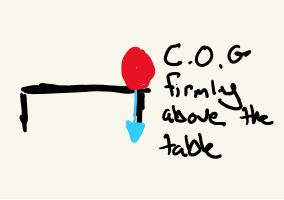

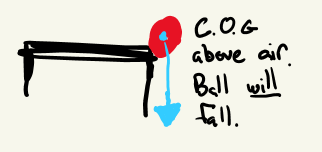
On humans, the center of gravity shifts depending on your body position. Standing up straight, the center of gravity is approximately in your lower abdomen. As you keep leaning to the right without moving your feet, your center of gravity slowly shifts beyond your feet, and you will eventually fall.
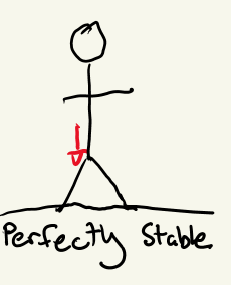
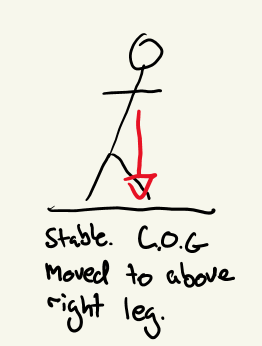
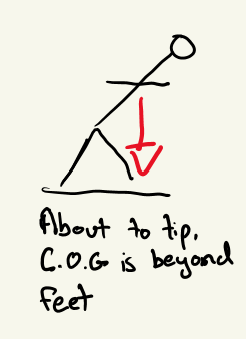
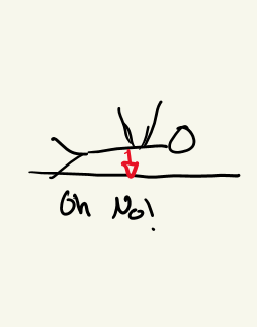
Moving from being planted on the ground to climbing a wall, it is important to always know where your center of gravity is in relation to the contact points on the wall. The advice ‘three points of contact’ and ‘flagging’ are ways to ensure you keep your center of gravity over your legs.
Good Examples
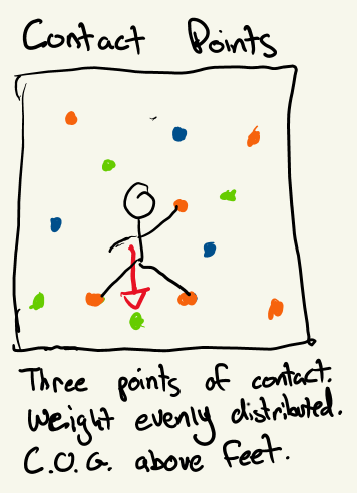
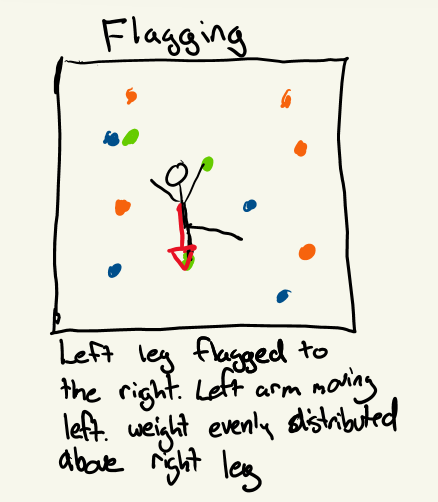
Bad Examples
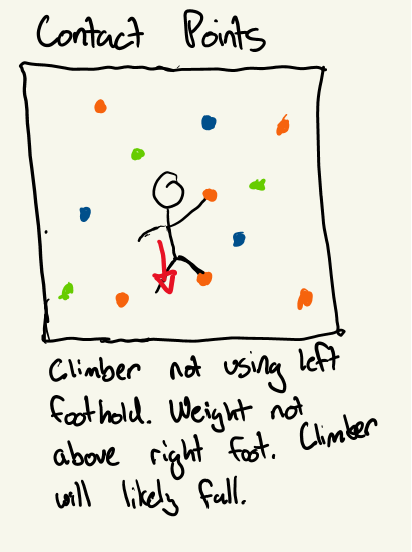

The next step is to understand how the cliff’s gradient affects the direction of gravity. The Earth also has a center of gravity—it’s core. Thus, the Earth methodically and consistently tries to suck climbers into its core.
The direction of gravity on the different wall gradients is shown below.
- Slab: gravity pulls the climber down into the slab.
- Vertical: the climber is pulled down right along the edge of the wall.
- Overhang: gravity pulls the climber down right into nothing.
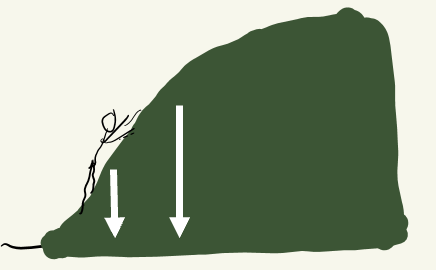
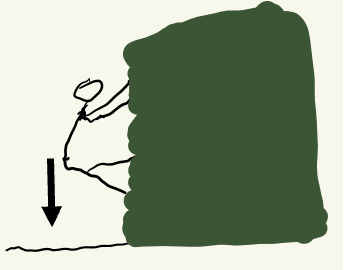
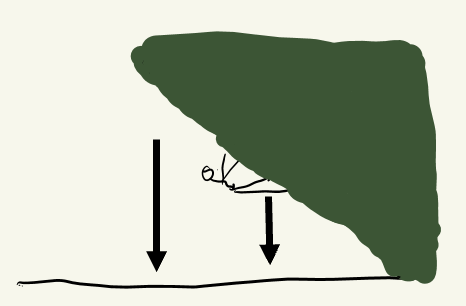
What does this mean for climbing? Look at the pictures above again. Which climber is making it more difficult on themselves?
That’s right, Jim on the vertical wall (it’s a little more personal when the stick figures have names).
Jim’s behind is hanging off the wall and gravity is dragging him down into the air below. To counteract that force, Jim will need to use a lot of arm strength. Jim should move his hips closer to the wall and above his feet, thereby, moving his center of gravity in line with the wall. Jim’s foe, gravity, will not change its tactics. It will still pull Jim from his center of gravity directly down, in this case, into his feet. Jim can then complete the climb and still have enough energy in his arms to high-five his friends at the summit.
In each example, keeping your hips close to the wall helps to counteract gravity. There are exceptions of course. And we will tackle them in our future blog posts.
The first step is complete. We now understand our enemy, Mr. Gravity. Next time, we will review our first tool to counteract its force: friction.
